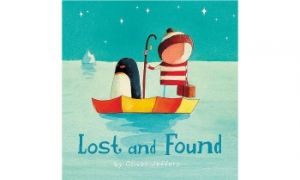Just imagine a line down the centre of the body. Crossing the midline is a child's ability to reach across the middle of the body with arms and legs crossing over the opposite side. The following article provides information on Why Crossing The Midline Is Important, Activities To Improve A Child's Ability in Crossing The Midline and more.
Why Crossing The Midline Is Important
Crossing the midline is vital to the development of using both sides of the body together, such as putting on shoes and socks, writing and cutting. It promotes the coordination and communication of the left and right hemispheres of the brain. It also encourages bilateral coordination, the process of developing a dominant hand and the development of fine-motor skills.
A child who uses a dominant hand to crosses the midline with their dominant hand, then this hand is going to get the practice it needs to develop fine motor skills, however, for a child that doesn't cross the midline, both hands get equal practice and the child's hand preference may be delayed.
A child who has problems crossing the midline shows the following signs:
- Switches hands when writing, drawing, painting and colouring.
- Uses left hand for activities on the left side of the body and right hand for activities on the right-hand side.
- Rotates their trunk to the opposite side when reaching across the body.
- Has difficulty tracking an object from one side of the body to the other.
- Has poor reading skills.
- Has poor pencil skills.
- Uses different feet to kick a ball.
- Has difficulty coordinating gross motor patterns (e.g. crawling, skipping, star-jumps).
This child also has difficulties with:
- Pencil based activities – a child may avoid these activities.
- Behaviour – a child may become angry or frustrated when engaging in fine motor
- Activities due to less refined hand skills.
- Performing self-care tasks independently (age influenced).
- Coordinating both sides of the body.
- Reading
- Noticing all of the details on a page when copying drawings or writing.
Improving A Child's Ability in Crossing The Midline
Activities include:
- Double drums or bongos: challenge the child to bang the right drum with the left hand and the left drum with the right hand.
- Push toy trucks and cars while crawling on the floor along a path made with tape; create lots of turns and waves
- Floor play: when playing on the floor, encourage the child to lean on one hand or elbow. Place the toys or games on the side being leaned on. This forces the child to cross the middle when playing.
- Play sorting games: place objects to sort on the left side and containers to place them in on the right side: sort coins, cars vs. trucks, pompoms, marbles, bingo chips, etc.
- Scoop sand into a bucket using one hand to hold the bucket and the other to scoop and reach across
- Play flashlight tag in a darkened room on the ceiling and walls while lying on your back; be sure to hold the flashlight in the same hand
- Steering wheel (found in many playgrounds): encouraging using the same hand to turn the wheel all the way around
- Alternating hand-over-hand activities such as pulling along a rope while on a scooter board
- Make figure 8's and other motions with streamers; one hand at a time and crossing left and right
- With a group of friends, play circle games to music while sitting crossed legged on the floor, such as passing a balloon or ball, toy, etc.
- Play body awareness games like the Hokey Pokey and Simon Says
Catch and Throw Games
- Throw or roll, if on the floor, a medium or large ball towards targets (bucket, container) to the right of centre and the left of center
- Bat balloons or a light Gertie balls with both hands on the bat or a tennis racket
- Paddle games like ping pong, Stick-ums, water paddle, scoop paddle; encourage using the same hand
- Bean bag toss: place target containers to the left and to the right; instruct the child to use the same hand for a full round, may switch to the other hand for alternating rounds if desired.
- Catch balls thrown, or rolled, to the right and to the left of center, encourage catching with both hands together
Fine Motor Activities
- Draw a large circle, oval, horizontal line or any picture that requires a left to right reach. Position the child in the center. Have the child place stickers or a stamper along the lines of the picture using the same hand.
- Coin flipping: line up a row of coins, placing the child at the center. Flip coins one at a time with the same hand from one end to the other.
- Deal cards to a group using one hand to hold the deck and the other to deal with everyone around the table.
Build midline crossing into everyday activities. Work on core stability and trunk rotation to encourage the physical movement of crossing the body's midline.
Reference:
Crossing the Body’s Midline, Kid Sense Child Development, South Australia
What Is Crossing The Midline and Why It is Important, Child Developmeny Centre, Hong Kong
Crossing The Midline, Therapy Street For Kids


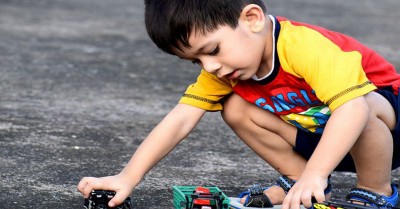

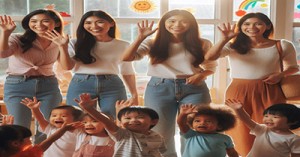


 Open ended questions cannot be responded to with one word answers such as yes or no. These types of questions enables a child to provide
Open ended questions cannot be responded to with one word answers such as yes or no. These types of questions enables a child to provide During your child’s preschool years, an important milestone begins to emerge. This is the development of pre-writing skills. Pre-writing skills are used to encourage, develop
During your child’s preschool years, an important milestone begins to emerge. This is the development of pre-writing skills. Pre-writing skills are used to encourage, develop Open ended materials enables children to play freely. They are objects that have no rules to follow, use or function. Raw materials that can be
Open ended materials enables children to play freely. They are objects that have no rules to follow, use or function. Raw materials that can be An Acknowledgment of the Country is a way of showing respect for the Traditional Owners and can be given by both non-Indigenous people and Aboriginal
An Acknowledgment of the Country is a way of showing respect for the Traditional Owners and can be given by both non-Indigenous people and Aboriginal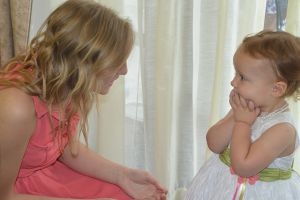 Language plays an important role in a child’s development. It enables a child to communicate effectively with their family, learn at school, socialize with friends,
Language plays an important role in a child’s development. It enables a child to communicate effectively with their family, learn at school, socialize with friends, Like adults, children have to deal with their own stress in life. Moving house, starting a new school, preparing for a new sibling - these are
Like adults, children have to deal with their own stress in life. Moving house, starting a new school, preparing for a new sibling - these are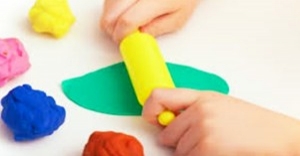 Playdough is such a versatile material. It provides numerous benefits to children as they manipulate it, it is safe and soothing and provides children with
Playdough is such a versatile material. It provides numerous benefits to children as they manipulate it, it is safe and soothing and provides children with Teaching children about sustainability enables them to appreciate and respect the natural environment. Early childhood services can provide meaningful hand on learning experiences in order
Teaching children about sustainability enables them to appreciate and respect the natural environment. Early childhood services can provide meaningful hand on learning experiences in order Recycling is an important concept that teaches children to care for the environment. It encourages children to be responsible and show a growing appreciating for
Recycling is an important concept that teaches children to care for the environment. It encourages children to be responsible and show a growing appreciating for When children apply paint to paper, glue things together, or pound a lump of clay, they experiment with colour, shape design and texture.
When children apply paint to paper, glue things together, or pound a lump of clay, they experiment with colour, shape design and texture.


